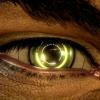Pocket neurobics has free designs for this: http://pocketneurobi...plorer-designs/
The one called "wiz_Mode3_1ecg_HRV_baroreflex_video.bxd" can be used for HRV training. It actually beats the regular emwave in some ways, since you also get a power spectrum (I think you only get this with the emwave pro version). Problem with this setup is that I dont know of any way to combine it with a TAG design, it would be quite complicated I think since designs cannot just be copied, you would need to rebuild this one inside a TAG design, also this design is built for mode 3, which might not work so well together with a TAG design.
You can also find a muscle biofeedback design there: "wiz_test_Mode3_emg_ecg.bxd"
I have not tried that one, it says emg ecg so maybe it is both muscle and heart?
I have also found free Itallis designs in the bioexplorer yahoo group, I think you can become a member there for free and then you can find the designs in files and then ITALLIS Designs
For example there is an ECG VC design - "AutoThresholding ECG capture with HRV training module. 2 INSTRUMENTS."
Also at ecg - "Multimodal Alpha Theta and Heart Rate Variability trainer"
They were uploaded in 2007-2008 so quite old by now, if you want newer versions I think you can buy them here: http://www.itallis.c...0126lf8fk41nr96
There are also other options, if you have an emwave you can obviously run it simultaneously with a TAG design, problem is that the emwave software is quite visually oriented so you need to pay attention to that, but then you miss visual feedback from TAG design, thats ok though I think since I usually train eyes closed I find audio only feedback is enough (at least the way I have configured it).
The audio feedback with emwave I think is quite poor, as far as I know, you can only get sounds when you go to different levels of coherence (3 levels, red, blue and green), that does not give much information, especially if you can already keep yourself in green.
One way I have found to fix this is to use a program called Mind Work Station (http://www.transparentcorp.com/). Its mainly a program for creating binaural beats and using mind machines and such, but you can couple your emwave to this and use the program to convert the coherence score into a sound, that way you can create continuous audio feedback with the coherence score, and you can couple it to the control of the volume or pitch of some sound or whatever. The program has quite a lot of options for that so I think it is a good way for creating audio feedback on coherence.
I think this is probably the simplest way so you can do eyes closed audio feedback only TAG+coherence combination training. You have to pay for the program of course so it gets a bit expensive, but if you are also interested in binaural beats and mind machines then it might be worth it, I have experimented with neurofeedback+mind machine combinations with this so theres a lot of things that can be done with this setup  .
.
For a combination of TAG+coherence+galvanic skin reponse training I think you can use this: http://www.wilddivine.com/
The advantage of this setup I think is that this thing measures boh HRV and GSR as far as I can tell, and it measures it on the fingers which is great, because the emwave uses an earlobe sensor it can be hard to combine with neurofeedback! I think you would have to place one of the reference electrodes on your neck or something like that because the emwave sensor will take up one of your earlobes! So this wild divine device is better in that sense I think since you can keep your earlobes free for neurofeedback electrodes  .
.
This device is a bit expensive though, so I have not invested in it yet! Would be pretty cool though to try some TAG+coherence+GSR+mind machine ultimate setup, would look a bit funny I guess  .
.
Edit: Forgot to add also on your question about hand temperature biofeedback lourdaud, I have looked into that but I havent tried it yet... there is a great book called "Beyond Biofeedback" by some pioneers in this field. It is actually a very powerful biofeedback modality, since you are training control of the autonomic nervous system, maybe you already heard about that, but I think it could be a powerful addition to the other feedback modalities. There are special biofeedback thermometers that are made for this kind of work http://www.amazon.co...rds=biofeedback
I am having trouble finding any place that sells them in Europe though, think the shipping costs will be quite high so I havent invested in one yet. Could also be cool to have two of them so you can train both hands simultaneously, apparently it is possible to raise the temperature of one and lower it on another, so you can train to a level of very high control of the autonomic nervous system, it is even possible to raise the temperature and lower it at the same time in the same hand, but requires exquisite control (Swami Rama did this in the "Beyond Biofeedback" authors lab, but he was a very highly developed yogi, should be possible for ordinary people too with biofeedback).
I am wondering if you really need one of these biofeedback thermometers or if ordinary ones will do, I guess the important thing is that they are very sensitive and mostly measures the temperature exactly on your body and not say the surrounding air, so it needs to be quite precise... so perhaps best to get one specifically built for this purpose...
Edited by Crowstream, 26 April 2015 - 10:38 AM.



























































